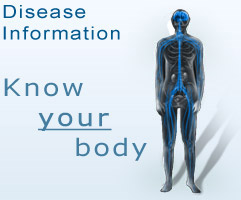Glaucoma
What is glaucoma?
Glaucoma is the build up of pressure in the eye, called intra-ocular pressure (IOP), combined with other risk factors. This leads to the long-term consequences of damage to the optic nerve and eventual visual loss, if left untreated.
In most types of glaucoma, the eye's drainage system becomes blocked so that the intra-ocular fluid cannot drain adequately.
Glaucoma leads to gradual visual loss. Even people with 'normal' pressure levels may experience vision loss from glaucoma. Sometimes, no symptoms are present during the early stages of the condition.
Early detection is vital to prevent progression of the condition.
Facts and figures
- Glaucoma may cause blindness if left untreated; however 10% of people on treatment still experience loss of vision.
- Glaucoma is a chronic condition, and loss of vision cannot be regained and lifelong monitoring is necessary.
- All ages are at risk of developing glaucoma, however more so in the elderly.
- The most common form of glaucoma (known as open-angle glaucoma) has virtually no symptoms. Visual loss is usually peripheral (all that is visible to the eye outside the central area of focus), and goes mostly unnoticed.
Treatment of glaucoma
Approach to treatment
Treatment is more likely to be successful if started early. Once vision is greatly impaired, treatment may prevent it from worsening, but it usually cannot restore vision completely.
Initiation of treatment
Most eye specialists (ophthalmologists) select and treat only those patients thought to be at greatest risk of blindness (most common approach). Medication will be prescribed after the specialist has evaluated the effects of and interaction with other medication.
Surgery
Surgery is required when optic nerve damage due to glaucoma is expected to worsen at any given level of IOP, and the patient is on maximum medical therapy.
Some patients' conditions may worsen simply because they have failed to comply with the medical regimen because of:
- high drug costs;
- inability to remember the schedule of multiple medications;
- inability to properly instil the drops in the eyes, secondary to arthritis or other incapacitation (especially common among elderly patients or those with other chronic systemic conditions); and
- intolerable side effects.
There are various surgical options available:
1. Laser surgery
- This is performed under local anaesthetic.
- Use of medication following laser surgery: in many cases medication is still required to control IOP, however the amount of medication may be reduced.
- Recovery only takes one day. The procedure takes place in the doctor's rooms or at an eye clinic. The eye may be blurry and irritated after surgery, but normal activities can be resumed by the next day.
2. Filtering microsurgery
- This procedure can be done under general anaesthesia, or under local anaesthesia with an intravenous injection to sedate the patient. This is an outpatient procedure, requiring no overnight stay.
- The success rate of this procedure is 70% to 90% for at least one year. In younger patients, the 'hole' heals more rapidly. Healing may be slowed down by drugs. If needed, this surgery can be repeated a number of times on the same eye.
- Please obtain full information about recovery from your doctor. Water must be kept out of the eye for one week after surgery. Blurred vision may occur for about six weeks after surgery. Eye drops (e.g. pilocarpine) can improve vision during this time. Cataracts (opaque tissue which forms in the eye and affects sight) may rarely develop. Change of contact lenses may be needed after surgery.
3. Drainage implant (seton tube shunt) surgery
A tube is inserted into the eye, which improves drainage of the fluid and subsequently promotes lowering of eye pressure.
4. Ciliary body ablation
This procedure is also known as cycloablation, which involves the permanent destruction of the ciliary body, and is considered to be the ‘last resort'.
Physical activity
Some studies show that a moderate amount of exercise may decrease IOP in both glaucoma patients and normal individuals. Whether it results in actual long-term IOP control and prevention of visual loss has yet to be determined.
Helpful hints
Eye drop tips
- Always wash your hands before instilling eye drops.
- Do not let the tip of the dropper touch any part of your eye.
- Ensure that the dropper stays clean.
- When instilling more than one drop into an eye, wait five minutes between each instilment. This prevents drops from being washed out before they have had a chance to work.
- Store all medication out of reach of children.
How to instil eye drops
- Tilt your head backwards.
- Gently pull down on the lower lid to form a pocket.
- Let a drop fall into the pocket.
- Slowly let go of the lid, but do not shut eyes tight.
- Gently press on the inner corner of your closed eyes for about three minutes to prevent drops from draining from the eye too quickly.
- Blot excess drops away from the eye.
- If your hands are shaky, approach from the side to rest your hand on your face for steadiness.
- If the bottle feels too small, wrap a small towel around it to make it easier to handle.
Daily life
- Schedule medication around daily routines, e.g. meal times.
- Share feelings and fears about glaucoma with your medical advisor, as well as people you trust.
- Some visual phenomena may be problematic, like loss of contrast sensitivity, problems with glare, etc.
- Limit night driving if night vision is a problem. Consider symptoms like side vision loss, light sensitivity, blurred vision and ‘near misses' as significant indicators to possibly even stop driving altogether.
- Yellow, amber and brown sunglasses or tinted lenses are useful for photosensitive problems. Glaucoma medication may even aggravate sunlight problems. Choose lenses that effectively block UV rays. Sunglasses should screen out 75% to 90% of visible light. Patients who suffer regularly with eye problems due to sun exposure should limit their exposure as far as possible. Also wear broad-rimmed hats.
- Always remember storage conditions for medication and refer to package inserts for details.
- Don't ignore a painful, red eye after surgery, especially with a discharge - it could indicate an infection and will need treatment urgently.
- Be aware of your workplace environment, as it relates to your glaucoma, especially with regard to lighting, glare-reducing computer screens, etc. Ensure that your employer is aware of special needs to adequately fulfil work duties, but also to assist with the management of your condition.
References
1. Council for Medical Schemes: CDL Algorithms
2. Bell, JA. Emedicine, Glaucoma. Open Angle. 29 May 2002
3. Merck Manual, Home edition: Glaucoma.
4. MDR and MIMS: Glaucoma drugs.
 TransmedBanner4.jpg)

